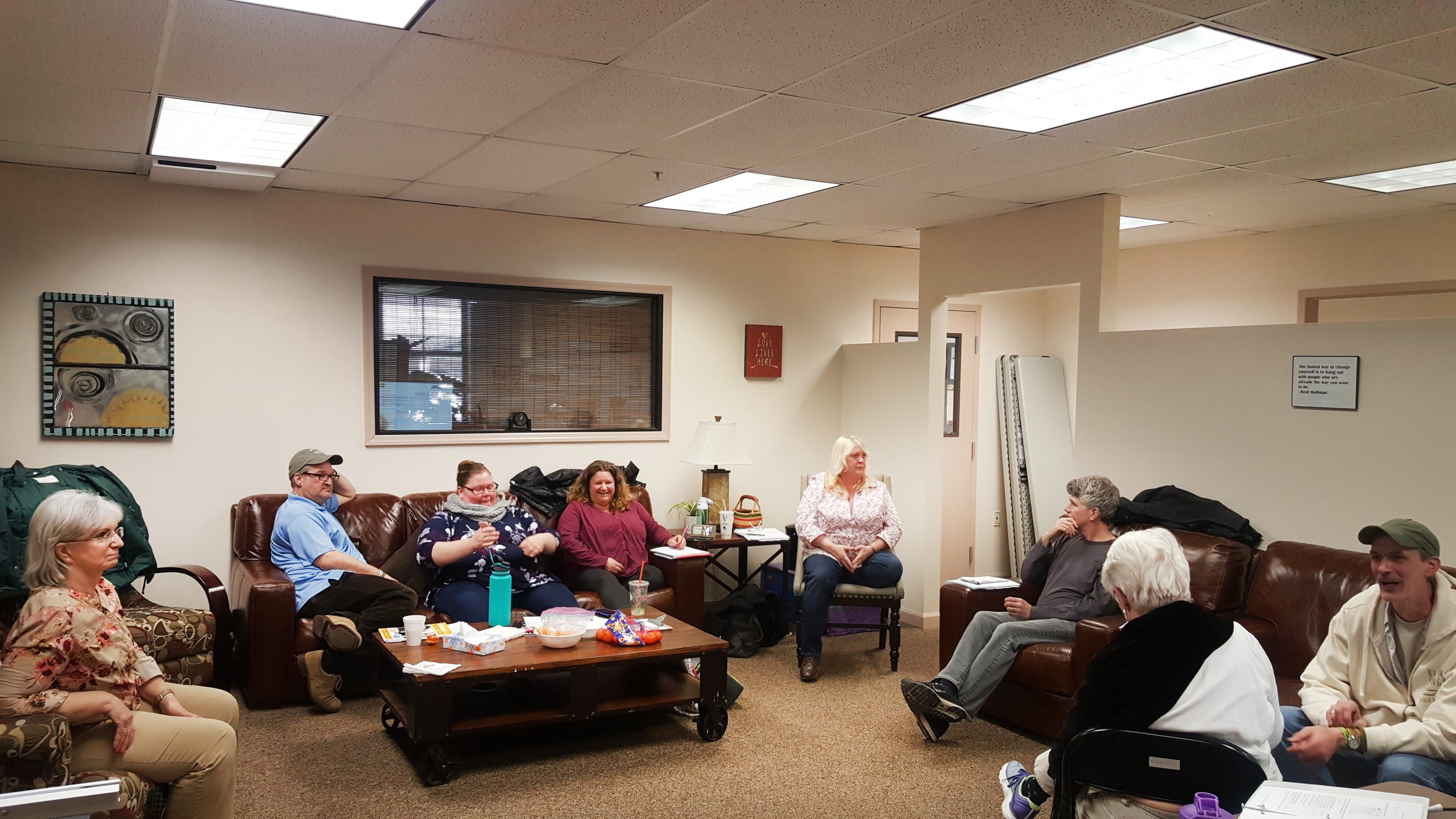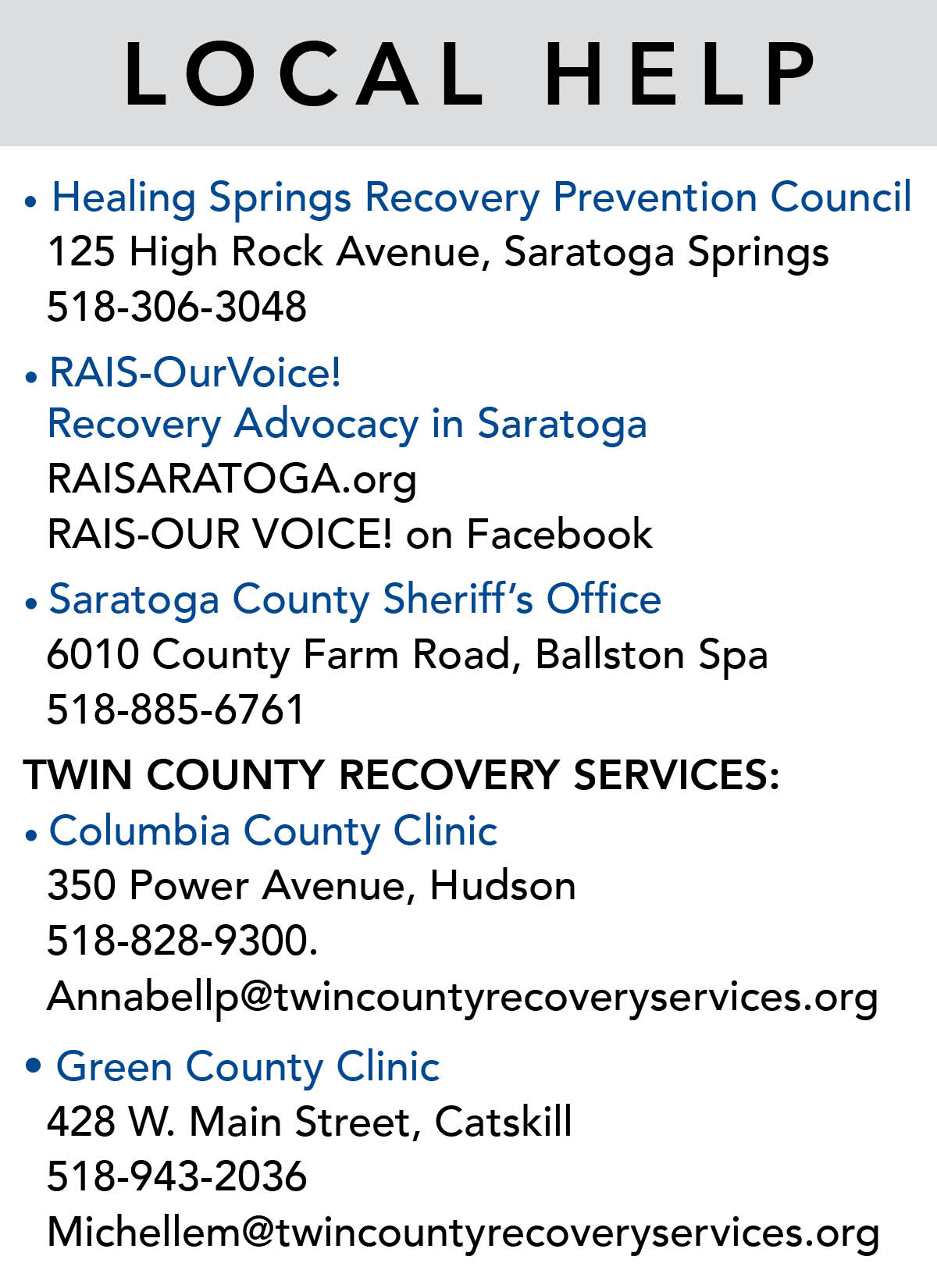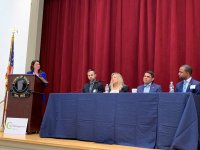THE PAIN in her voice was still there, beneath the surface. Even though her daughter had just completed an extensive stint in rehab and was on her way to a halfway house somewhere down South, her fear and anxiety were palpable, even over the phone.
While Mary’s story (not her real name) is uniquely her own, it is nevertheless a story with familiar themes. No matter how many times people have told me their own tales of bailing their kid
out of jail, kicking her out of the house for stealing, or finding him passed out on the bathroom floor, the needle still sticking out of his arm, I cannot get over the constant and pervasive threads of the truths each family shares about their shared journey through addiction.
And make no mistake about it. It is a journey, one the addict does not make alone. Addiction is a family disease. It is a community disease and it runs roughshod across socio-economic, educational, and ethnic lines. Addiction is an equal opportunity perp.
According to the NYS Department of Health, in 2016 there were 1,238 deaths from heroin and opioid use, 6,621 people were seen in emergency rooms for overdoses and 1,855 hospital admissions. While other states experienced severely higher instances of overdose, hospitalization and death during that same period, Lieutenant Dan Morley of the Saratoga County Sheriff’s department says that the number of calls coming into the dispatcher office is still entirely too high and warrants a new level – and a new kind – of response.
Thanks to people like Morley and his team, new strategies are being used to reach out to families of addicts. Morley said that, about a year ago, the sheriff’s department began implementing a procedure of following up at an addict’s home after an overdose. For Mary, when Lieutenant Morley showed up at her door the day after her daughter’s overdose, it felt like a life-line being tossed to her.
Before this, Mary had struggled. She didn’t know who to turn to and, in many instances, she was told that there was a two-week or longer waiting list to get her daughter into rehab. Once she was even told that her daughter wasn’t “sick enough” to warrant being admitted into a rehab facility.
When you’re an addict, sometimes two weeks is too long to wait.
People like Lieutenant Morley are doing the vital outreach and serving as life-lines between addicts, their families and the help they need. Within a few hours of meeting Morley, Mary received the kind of help and information she had been so desperately seeking for the last few years.
“He comes to help people. He is just the most compassionate person. He offers so much help and knowledge about where to go. He is the most wonderful person in the world. I would not have known where to go without him,” said Mary.
One of the places he told Mary about is Healing Springs Recovery Community and Outreach Center, a recently created resource for addicts, their families and loved ones who are struggling along the dark path of addiction. Located at 125 High Rock Avenue, Suite 105A in Saratoga Springs, Healing Springs is funded through state grants and is part of a larger network, Southern Adirondack Recovery Alliance (SARA) with additional sites in Johnstown and Hudson Falls. Its purpose is to serve as a “hub” for recovery support services and it welcomes both addicts and their families and loved ones. It is a peer-driven and peer- delivered support services-based organization. For many people, this is good news. People 18 years or older are welcome into the program, regardless of what stage of recovery they are in.
 A group meeting at Healing Springs. Photo provided.
A group meeting at Healing Springs. Photo provided.
Fawn Montanye, CRPA-P, is the site coordinator for the Saratoga Springs program and she stressed the importance of peer-on-peer support, mentoring and education. She also talked about the importance of providing support to families.
The organization is free, and no insurance is necessary to gain access to the facility and its many programs and group activities. Some of those activities include recovery yoga, Narcotics Anonymous and Heroin Anonymous meetings, Reiki, and young people’s group AA.
Montanye explained that Healing Springs is different from other support systems in that it is not abstinence-based. “Somebody may want to stop using opioids, but maybe they are not going to stop smoking marijuana,” said Montanye. While Healing Springs is not a faith-based organization like Alcoholics Anonymous, they do use some of the questions that have become a standard means of determining if a person is an addict or alcoholic. Questions such as: “Do you feel powerless to stop using your drug of choice? Has your life become unmanageable? Are you struggling to hold onto a job or a relationship?” The non-abstinence feature is a marked departure from many programs that adhere to a stricter philosophy of abstinence across the board. The prevailing school of thought has been that, if a person is an addict, he or she cannot be considered “sober” unless they are completely free of any drug or alcohol.
Healing Springs is different and Montanye explains. “My job is not to judge. We are not dictating or telling people how to achieve recovery, or what recovery looks like.” That does not mean that someone in recovery should feel free about indulging in other substances. For far too many addicts, using a substance that was not previously their “drug of choice” can often lead them back to the addiction that got them into trouble in the first place and jeopardize their lives and their futures.
Healing Springs is not bound by the more restrictive mandates that other recovery centers operate under. Annabel Lago-Pedrick is the Director of Out-Patient Services at Twin County Recovery, based in Hudson and Catskill.
She explained that, while much of their operating capital also comes through OASAS and state funding, 96 percent of her Twin County’s clients are mandated to seek treatment there, either by a probation or parole board, the Department of Social Services or the courts.
“That makes it tough because those entities want to see abstinence. So, it’s tough when we have to report back and comply with those agencies, said Lago-Pedrick, who has been counseling addicts for ten years.
She added that, while she agrees that everyone’s recovery is different, in her experience, for most people who return to the facility because of relapse, the reason is usually that they have stopped going to their sober support meetings or they’ve begun using another substance, which makes it easier for them to revert to old behavior patterns.
“When we ask, ‘Why are you back?’ they pretty much say the same thing – “Oh. I smoked pot, drank beer.’ So much of addiction has to do with behavior, habits and loving the feeling of being high. It’s very easy to do that,” said Lago-Pedrick.
However, she concedes that the opioid epidemic has changed the way so many people are being treated. Because addiction has reached epidemic proportions, centers like Healing Springs are vital to the community and serve as a place where people can begin – or continue – their journey into recovery.
“The reality is that we still don’t have enough treatment centers and we still have issues getting people who need it getting into rehab facilities. Now with the crisis, we are in a place where, if we don’t provide Medicaid-assisted treatment, someone can die,” said Lago-Pedrick.
Montanye agrees with how critical it has become to get people the help they need. “Here, we want to support everyone on their own path. I do agree that, if someone goes back to using something when they were using nothing, then yes, it is still a substance that is filling a void and they haven’t had a spiritual awakening,” said Montanye.
She quickly clarifies that by “spiritual awakening,” she is referring to finding that something in oneself that will enable them to do the hard work of recovery and lead them – and their loved ones – out of the dark place of addiction into the light of recovery and sobriety.
For Mary, her recovering daughter and hundreds more who have already been helped by Healing Springs, the fact that they were able to receive the kind of help they needed – when they needed it – is a comfort and a source of hope. “There is help, right here in Saratoga, and I never knew about these places,” said Mary. If not for the tireless efforts of people like Lieutenant Morley, Fawn Montanye and so many others, Mary’s daughter’s story may have had a different ending.





 How to resolve AdBlock issue?
How to resolve AdBlock issue? 































